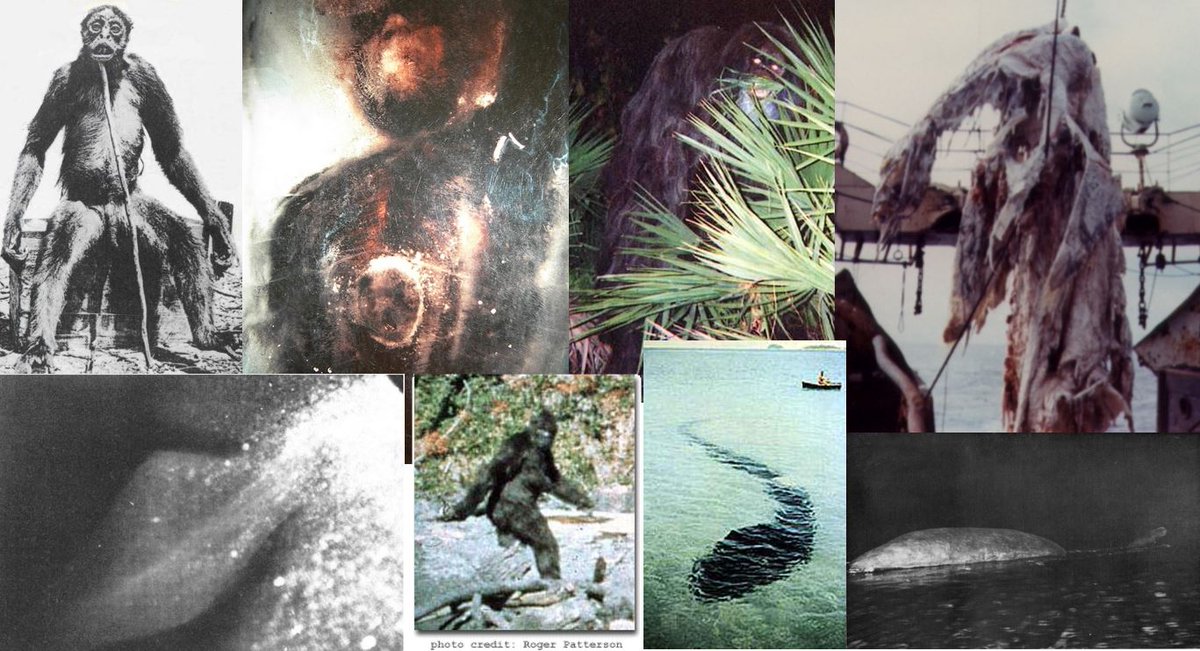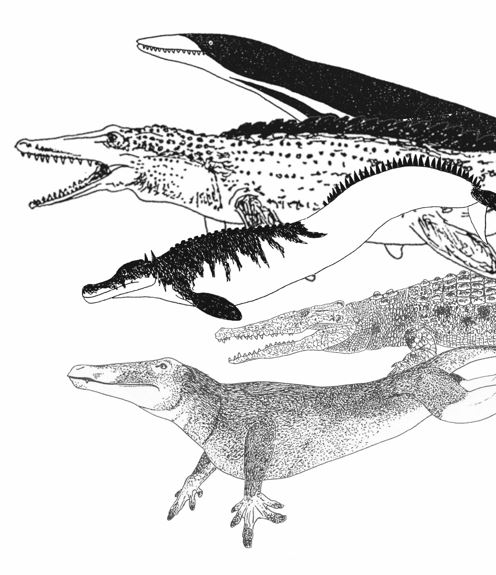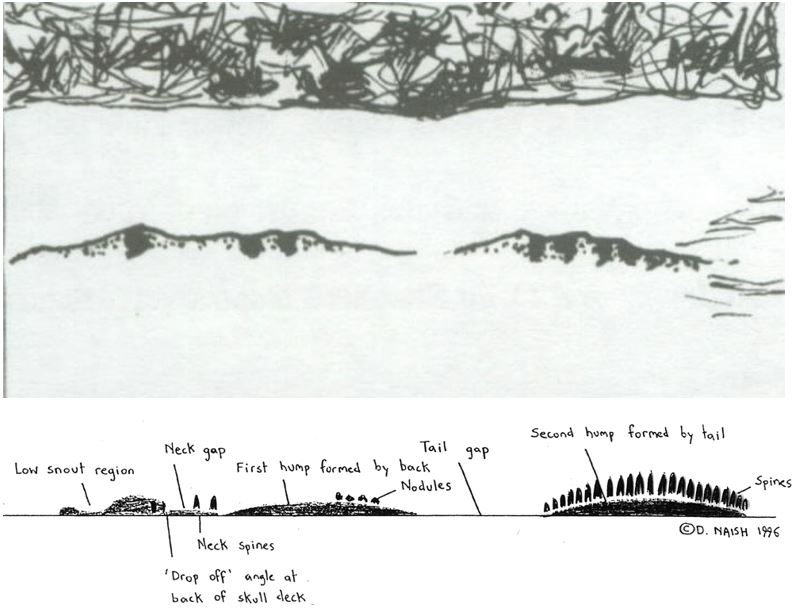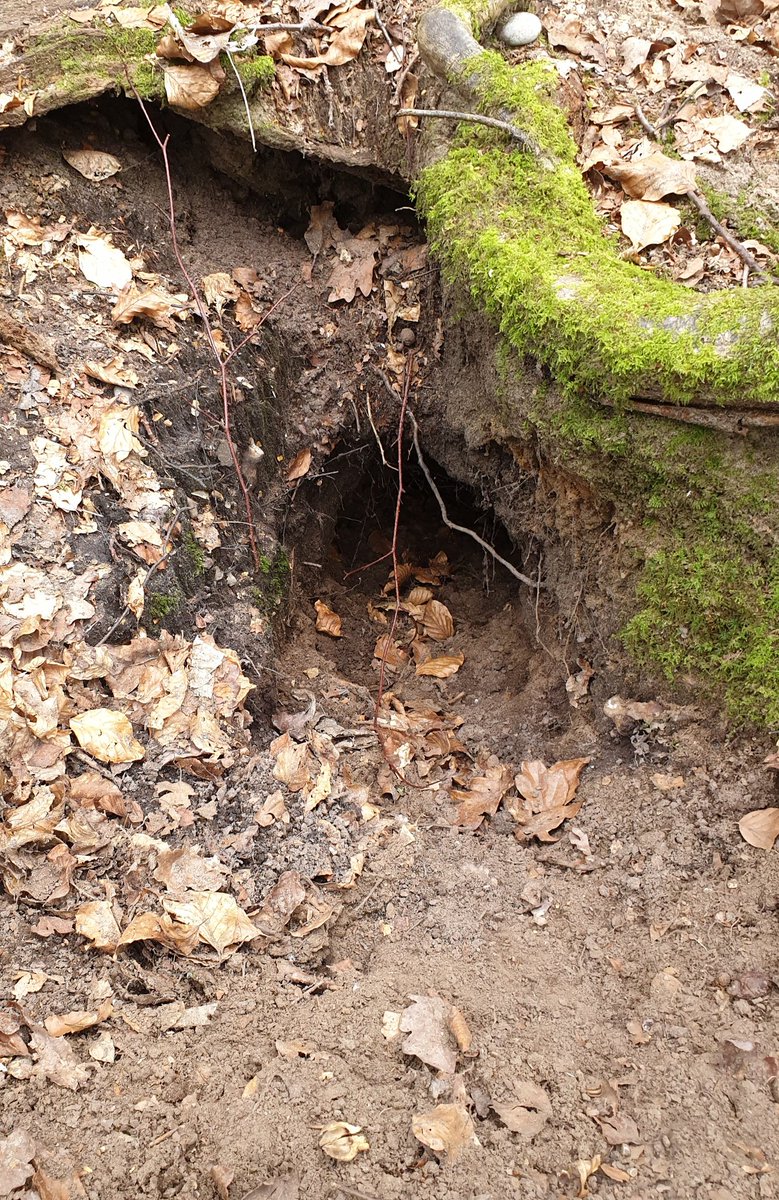
Time for a #TetZoocryptomegathread! This time we look at one of the most famous sea monster accounts: the WWI incident in which the crew of the U-boat U-28 witnessed a gigantic, crocodile-shaped monster get blasted out of the water by an explosion. Yes, you read that right… 

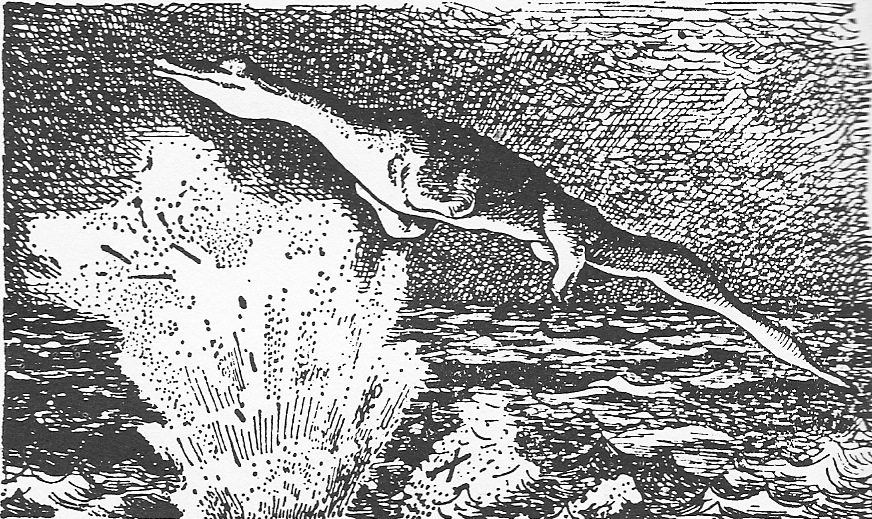

The U-28 incident is generally considered one of the most amazing and exciting claimed sea monster observations, combining the drama and historical realism of marine warfare with a remarkable creature account that defies belief… #cryptozoology #monsters
As usual with these megathreads, please remember that I discuss both the ‘pros’ and ‘cons’ of these sorts of stories. If you read something that seems wrong, silly or illogical, remember that I’ll very likely be coming back to it later on in the thread. Ok…
Disclaimer: get read for a LOOOOONG thread. These ain’t called megathreads for nothin…
The story goes that – while on patrol about 110 km off the south-west coast of Ireland on 30th (or 31st) July 1915 – the U-28 succeeded in torpedoing the British steamer the Iberian, which sank…
As the U-28 crew watched the Iberian sink, a substantial underwater explosion occurred, this apparently being the result of the vessel’s boilers imploding...
Among the wreckage thrown into the air was a massive, “writhing and struggling wildly” sea monster which had somehow got too close to the explosion and been lifted clear out of the water…
A few very dramatic depictions of this incident are findable online, mostly as YouTube thumbnails. They are not in the least bit accurate, but they’re fun to look at… hey, glad the red arrow's there, I'd have missed the point of interest without it... 



The animal was blasted 60-100 ft (18-30m) skyward, and was supposedly watched simultaneously by six people, including the officer of the watch Dieckmann, chief engineer Ziemer, engineer officer Romeiss, and the U-28’s commander himself…
The key witness here was the commander: Georg-Günther Freiherr Von Forstner (1882-1940), usually termed Baron Von Forstner, since it’s thanks to him that the story was recounted in print…
Von Forstner appears to have been something of a celebrity in WWI Germany, in part because he was commander of Germany’s very first U-boat, U-1. No photos of him appear to be available, unfortunately...
His account on life as a submarine commander was published in 1916 as The Journal of Submarine Commander Von Forstner. This was translated into English in 1917… 

I’ve checked it, and there’s no mention of a sea monster, nor indeed is the sinking of the Iberian mentioned at all, which seems odd in view of the fame this incident has had in the decades since…
After the monster was thrown skyward, it fell back into the sea, was visible for a further 10-15 seconds, and sank from sight. There was no time for a photo (a statement which implies that at least one man had a camera to hand, which may or may not have been true, I don’t know)…
Von Forstner’s account of the animal’s behaviour is a bit contradictory. His story is usually taken as showing that the animal was ‘blasted upwards’ by the force of the explosion, but he also stated that it “leapt out of the water”. What, leapt 18-30m up into the air?
…. Excuse me if I’m slightly suspicious of the idea that an gigantic, long-bodied animal could perform such feat. For comparison, a Killer whale – at most, 10 m long – can leap maybe 5 m above the surface [image © Biosphoto/Christopher Swann]… 

In terms of the monster’s appearance, it was huge: 18 m (60 ft) long. Von Forstner stated that it “was like a crocodile in shape and had four limbs with powerful webbed feet and a long tail tapering to a point”… 

This case is formative in that it’s THE key observation of a kind of sea monster endorsed by several cryptozoologists. Namely the MARINE SAURIAN, a crocodile-shaped marine reptile equipped with paddles and a sculling tail… 

Founding cryptozoologist Bernard Heuvelmans – who I’ve now written about on an innumerable number of occasions (and I’m not finished yet) – featured an illustration of the U-28 monster in his famous, definitive work of 1968: In the Wake of the Sea-Serpents... 




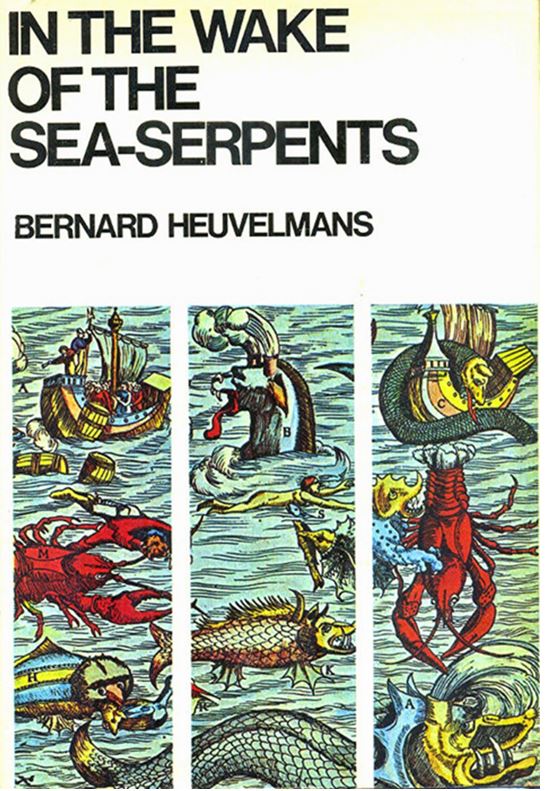
... (Heuvelmans used the term ‘sea-serpents’ as a catch-all term for all ‘sea monsters’)…
Therein, #Heuvelmans quoted (p. 395) Von Forstner from a newspaper account, and also featured a redrawing of a drawing of the account, the latter being credited to Richard Hennig (these details are significant for reasons discussed later)… #seamonsters #cryptozoology #monsters 

This drawing gives the story an element of plausibility, because it makes it look at if the U-28 sea monster was a specialised aquatic reptile with anatomical features recalling those of the Mesozoic marine reptiles we know of from the fossil record…
… namely, the #plesiosaurs (some of which were short-necked and with a crocodile-like head), the giant swimming lizards known as #mosasaurs, and the #thalattosuchians (sea-going kin of crocodylians, some of which had flippers for forelimbs and, again, a crocodile-like head)… 
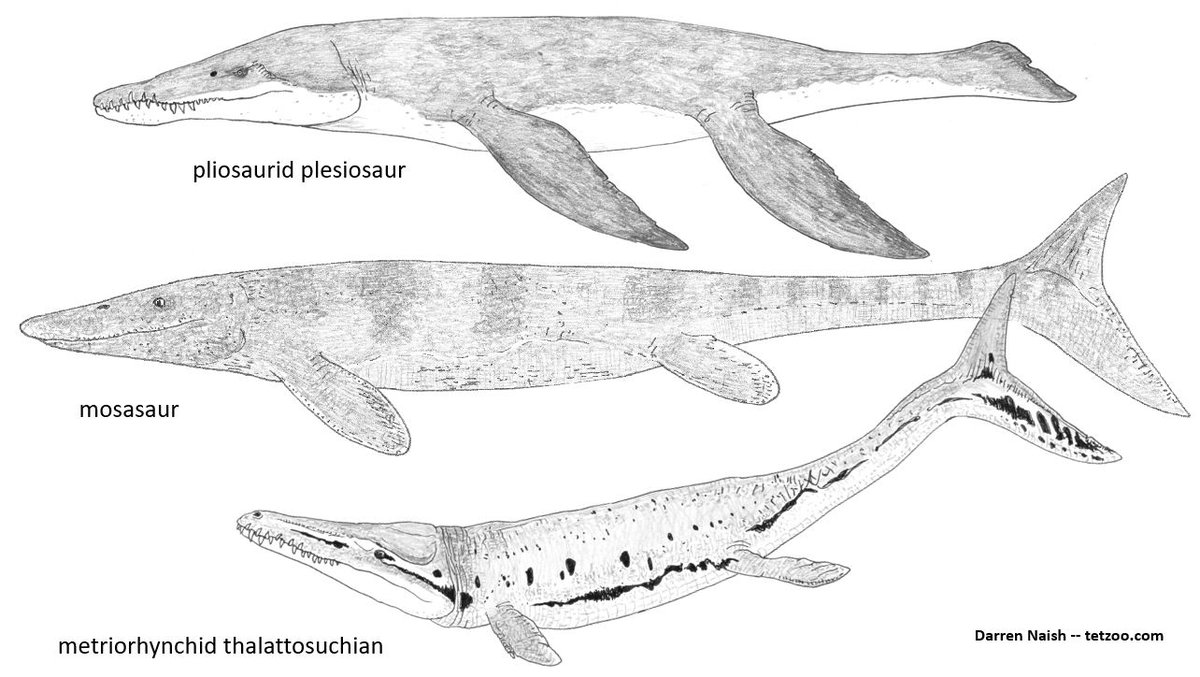
Ever since Heuvelmans’s coverage of the U-28 account, the majority of cryptozoologists have covered the case as if it were a bona fide description of a ‘marine saurian’...
... and have implied that Heuvelmans’s idea that mosasaurs and/or thalattosuchians might have survived to the present has merit…
Well, if this is what you think… I have bad news…
As you’ll see later in this thread, there are, sadly, lots of reasons for thinking that the incident – at least, that part involving a crocodile-shaped sea monster – never occurred…
Having mentioned Bernard Heuvelmans, I have to say the following (in part due to comments made in a recently published book). It’s not uncommon to see cryptozoologists refer to #Heuvelmans as a far-sighted genius, head and shoulders above those of us who criticise him... 

Alas, the fact remains that he simply isn’t (or wasn’t) a reliable source of information. He very often based his retellings of claimed cryptid encounters on secondary, popular sources…
… he was often unaware of (or failed to cite or mention) follow-up accounts which demonstrated that some of the cases he promoted were known to be false or bogus…
… his understanding of evolutionary history and biology were very often out of date even for his time (he was mostly writing in the 1950s, 60s, 70s and 80s), and his zoological theorising was and is, to put it politely, unrealistically speculative….
As we’ll see, his interpretation of the U-28 sea monster account almost provides a textbook example of his reliability as a source…
Before continuing, I also want to say that we know quite a bit about the U-28 (shown here), termed properly the SM U-28 (‘SM’ stands for ‘Seiner Majestät’, meaning ‘His Majesty’s’).... 

It was a Type 27 U-boat, launched in February 1913, commissioned into service in June 1914, and ending its service on September 2nd 1917…
Von Forstner was in command between its commissioning and June 1916 when he was relieved by Otto Rohrbeck, who in turn was relieved by Freiherr Von Loe-Degenhart in August 1916. The vessel’s final commander was George Schmidt, who took command in January 1917…
U-28 (here, on the right) performed five patrols during its time in service and was remarkably successful, sinking 40 enemy vessels, most of which were British (that number might seem high, but the most successful WWI U-boats sank over 200 enemy vessels)... 
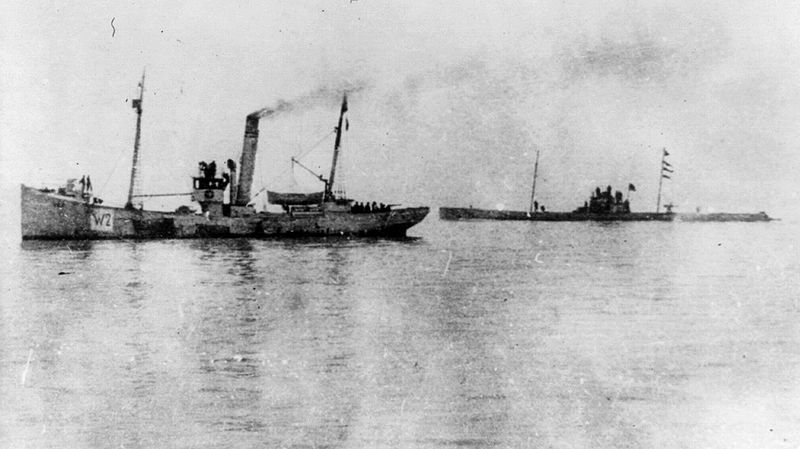
Several Norwegian and Russian vessels, one French, one Belgian, one Spanish and one Canadian vessel were sunk too. Three Dutch vessels were also sunk or captured…
U-28 didn’t have an extended career after the Iberian incident of 1915. After departing from Emden (Germany) in the August of 1917, U-28 encountered the British steamer Oliver Branch while north of Norway…
A direct torpedo hit disabled the Olive Branch (ironically named, given the circumstances): as the U-28 moved in, firing all the while, a large munition store was detonated, and a massive explosion occurred…
This so damaged the U-28 that it sank, all 39 crew (some of whom succeeding in escaping) perishing either within the vessel or while in the water…
Remember: they were north of North Cape, Norway at the time (map from Google maps). The water would have been below 10 deg C, which is cold enough that immersion is immediately life-threatening... 
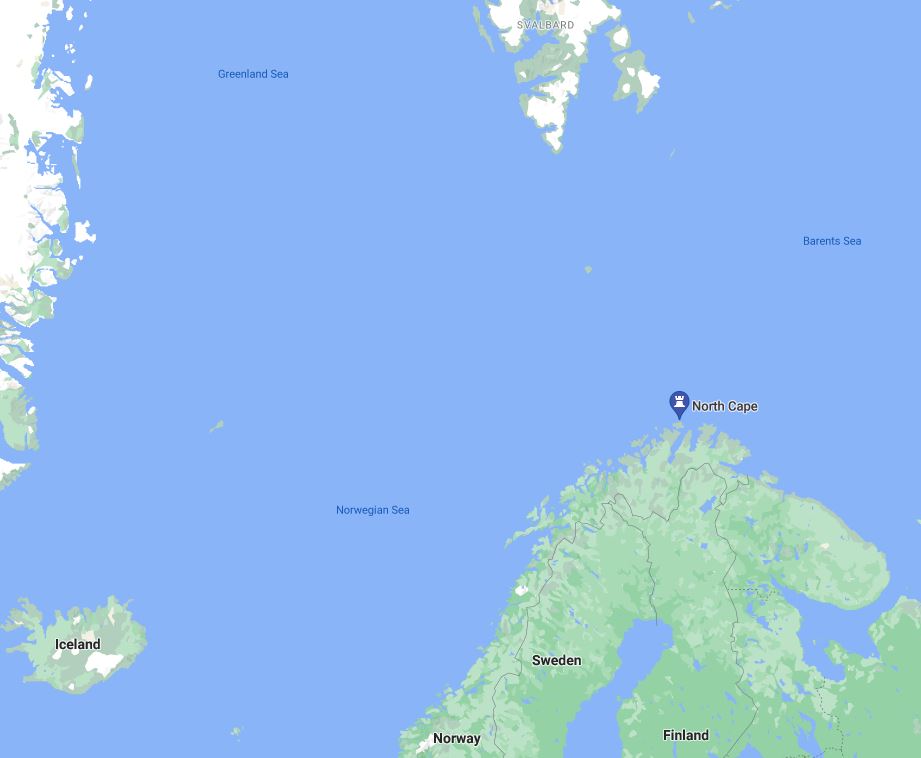
Let’s pause for a moment to reflect on the terrible human cost of these frequent sea battles. Death in a submarine, or in freezing water, are both the stuff of nightmares…
There’s an alternative story to the fate of the U-28 in which the explosion of the Olive Branch blasted cargo – including army trucks – so high into the air that it was the falling of one of the trucks onto the U-28 which caused the fatal damage and its eventual sinking…
Back to the sea monster account and its veracity, or otherwise. The first red flag is that Von Forstner didn’t report or even mention this supposed 1915 incident until 1933…
If you know anything about the history of monster accounts, this date is significant (and suspicious) since this is the time when the #LochNessMonster first gained international fame [image by Gino D’Achille]… 

… mostly thanks to the August 1933 sighting of Mr and Mrs Spicer, their infamous account involving an encounter with a hideous blob-like #Nessie that crossed the road in front of their car. I covered this story in another #TetZoocryptomegathread….
https://twitter.com/TetZoo/status/1278322629406076928
Historian and author Mike Dash (whose 2010 article on the U-28 monster account was highly influential to my retelling here) has also drawn attention to the fact that 1933 was about the time at which some people in Germany might... 

... have been sufficiently emboldened by nationalism to promote Germany as a world leader in all things; sea monster accounts included, perhaps…
Indeed, Von Forstner’s account was first published in the right-wing, pro-government newspaper Deutsche Allgemeine Zeitung…
Ok, you can play devil’s advocate and say that aquatic monsters were too taboo to be mentioned prior to this time. Or you could say that this 1933 ‘reveal’ is suspicious: a red flag. And, as we’ll see, it’s not exactly the only red flag relevant to Von Forstner’s tale…
You will recall my mention upthread of the fact that Von Forstner said how he was one of six people who watched the monster simultaneously. So far as we know right now, none of these people ever put the sighting on record…
Von Forstner said in 1934 that all failed to survive the war – but he also mentioned an additional witness (thus meaning that he was actually aware of seven witnesses, including himself), this being ship’s cook Robert Maas, who did survive and was met “recently”…
Alas, we only have Von Forstner’s word on this…
To return to the sinking of the Iberian and the alleged sea monster of 1915, a number of discrepancies in Von Forstner’s account (it was published on at least three separate occasions) are worthy of note…
For the Iberian to reach the depth Von Forstner said it did before the explosion (“we can reckon, without risking being too far out… about 500 fathoms”; that’s over 910 metres down), it would have to have sunk at an impossibly fast speed...
Furthermore, an explosion occurring nearly a kilometre under the surface simply cannot have blasted objects above the surface…
This depth data wasn’t included in a second retelling of Von Forstner’s account, this time published in the 1935 German edition of Rupert Gould’s 1934 book The Loch Ness Monster and Others… 

This German edition was titled Begegnungen mit Seeungeheurn, meaning ‘Encounters With Sea Monsters’, and included additional material provided by Von Forstner, who shares authorship of this version with Gould. That Von Forstner is coauthor of a #Nessie book is not well known... 

The version of accounts relayed in Begegnungen included most of the key details we’ve seen already. What’s more interesting here, however, is that Von Forstner was (due to this co-authorship)…
… now a contributor to the lore of Loch Ness Monster (and to water monster lore in general). In fact, he could be said to be exploiting it... #LochNess #Nessie #cryptozoology 



Once you’re an author on a given subject (especially a newsworthy one that’s extremely popular at the time you’re writing), you’re a non-neutral contributor to the popularity and success of works on that subject…
Anyway, the depth data was also excluded from a second newspaper version of the story, this time published in Kölnische Illustrierten Zeitung in February 1934…
Could the one-time appearance of that clearly erroneous depth data be evidence that Von Forstner was prone to including fictional or fictionalised details in his retellings of the account? I’m speculating, but I think that this is implied. Furthermore…
The Germans were very good at keeping detailed accounts of what happened on U-boats. Each had its own Kriegstagbücher (‘war diary’) or KTB; their contents have survived and were converted at some point to microfilm…
The U-28’s records are among them, and were consulted by Mike Dash for his 2010 research on this case…
They reveal the following: that the U-28 hit the Iberian with two direct shots and opened fire (first at a range of 6000m) during a zig-zagging pursuit. Smoke poured from the Iberian’s ventilators and funnels, and it sank, the bow remaining in the air…
Four men died on board (and were left there) but 70-80 people (though read on) escaped on lifeboats. Two of these people needed medical aid which the U-28 provided. And that’s it. No giant underwater explosion, no crocodile-shaped sea monster…
It gets better. It turns out that there weren’t 70-80 survivors, but 61. They were rescued by a patrol ship and taken back to Ireland, and quite a few then spoke to the press…
As discussed by Ulrich Magin in his 1996 article on Heuvelmans’s sea monster writings, a local newspaper – the Cork County Eagle & Munster Advertiser – devoted a whole page to the event on August 7th… 

Therein, various accounts of the Iberian’s crew were reported. There was plenty of mention of details matching those in the U-28’s KTB. But no mention of a monster…
August 1915 also saw the story covered in Britain’s The Times as well as in The New York Times and the Washington Post. And… no mention of a sea monster in these accounts either, nor indeed of an explosion (parts of those articles are shown here)… 



Dash noted the possibility that the Cork paper and The Times might have wanted to be conservative and serious in reporting this account, such was its gravity and Britain and Ireland’s involvement in the war. They might thus have deliberately excluded mention of a sea monster…
… but, if that were so, the American papers that covered the event could surely afford to be more sensational (the US didn’t enter WWI until 1917), especially given that some of the Iberian’s crew were American. But, nope, no sea monster event in the American papers either...
61 eyewitnesses, given free rein to describe events of the Iberian’s sinking within days of it occurring, and all of this reported in newspapers that had every reason to focus on sensation. And yet no sea monster, no explosion…
The conclusion is that there never was a U-28 sea monster. Von Forstner invented the account…
Here’s where we need to come back to the fact, mentioned upthread, that the drawing of the U-28 monster featured in Heuvelmans’s sea-serpent book was a redrawing of a drawing produced by Richard Hennig… 



Remember what I said earlier about Heuvelmans being a less than reliable source? The illustration of the U-28 monster included in Heuvelmans’s 1968 book has the feel of an aquatically adapted, novel kind of sea reptile…
The animal looks smooth-skinned, streamlined, and its limbs lack obvious digits and have been interpreted by most viewers (myself included) as paddles…
Here’s proof that Heuvelmans had relied on a popular source – specifically, Richard Hennig’s popular book Les Grandes Enigmes de l’Univers, published on numerous occasions since 1957 – and not on Von Forstner’s articles or book... 



Had Heuvelmans checked Von Forstner’s original article and book, he would have seen the depiction of the U-28 monster which accompanied Von Forstner’s 1934 Kölnische Illustrierten Zeitung article…
This illustration (which we should assume was produced under Von Forstner’s direction) doesn’t show a ‘marine saurian’ at all, but – instead – an object that has all the distinctive scutes and large, armour-like scales of a crocodile… 
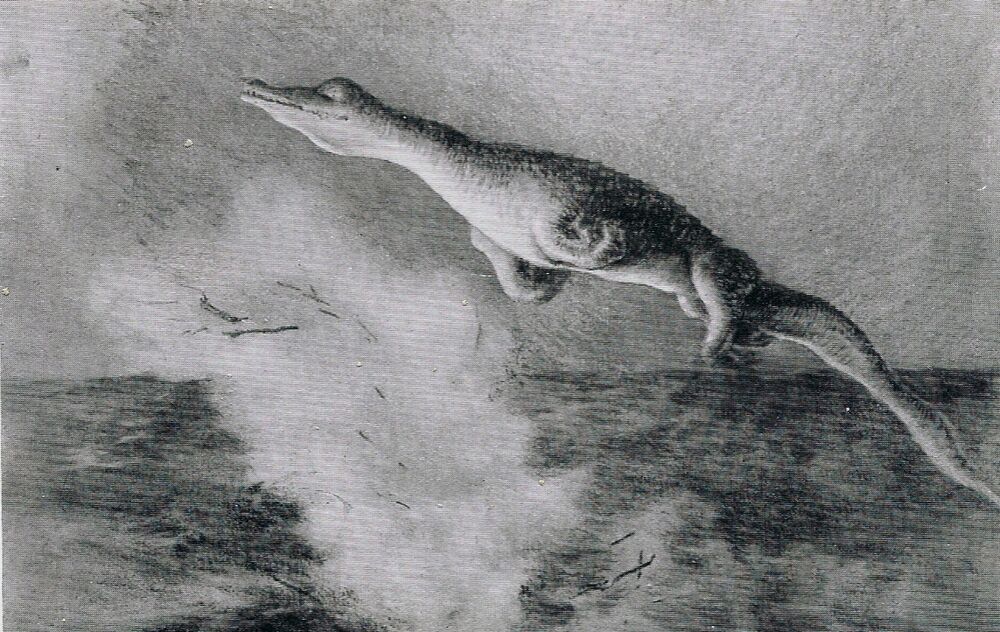
It doesn’t definitely have flippers, but seems (it’s hard to tell) to have ‘normal’ limbs adapted for walking (the limbs appear to be curled up in an unusual, highly unnatural pose)…
Furthermore, its eye is proportionally massive (and has a vertical, slit-like pupil), and the back of its head is substantially elevated relative to its low snout. In other words, its head has the proportions of a juvenile animal… 

I think that this is exactly what it is: I think that the drawing (which is a very well-rendered piece of art) is based on a stuffed baby crocodile…
I told this to Mike Dash during his research and he was inclined to agree, so this proposal is already on record. It would – needless to say – be in keeping with the monster part of the U-28/Iberian story being a fabrication…
At this point – another short tangent… hello to those youtubers excited enough by this story to turn it into a video-essay. If you do that PLEASE remember to credit where you heard these facts and opinions, thank you! :)
The conclusion, then, has to be that the event – or, at least, that part of the event in which a crocodile-shaped sea monster was blasted out of the water – didn’t occur, and in fact was fabricated by Von Forstner in order to make his account more sensational…
Specifically, it was fabricated to take advantage of the Loch Ness Monster craze of the 1930s, a craze which Von Forstner took exploited not just through telling the U-28 account, but also due to his involvement in the German publication of Gould’s Loch Ness Monster book… 

All of what I’ve said here is very soon evident if you bother to dig into the case and its details, so those cryptozoologists who’ve continued to discuss the event as if were real are guilty of superficial research, as indeed was Heuvelmans himself...
As I said upthread, Heuvelmans simply wasn’t the awesome genius researcher some people think he was, sorry…
This about brings things to a close. As is so often the case in these megathreads, what you’ve just read is an extended version of the text included in my 2017 book #HuntingMonsters.... #cryptozoology #monsters 



.... which is now hard to get as a physical book, but still available as an ebook, please buy it... amazon.co.uk/gp/product/B07……
In compiling this megathread, I consulted In the Wake by Heuvelmans as well as other books that cover sea monsters (Coleman & Huyghe 2003, Woodley 2008), I looked at Magin’s 1996 Fortean Studies article, and... 



.... in particular – Mike Dash’s excellent 2010 article on this case, best accessed here at wayback machine: web.archive.org/web/2011102508…
My plan with these #TetZoocryptomegathread texts is to compile them into a book, or maybe use them as the template for a TV series or something. Thanks to those of you who’ve provided support or said nice things about this project, I’m glad that you appreciate it… #cryptozoology 

For those of who that don’t know, I blog at Tetrapod Zoology where I cover zoological goings-on of all sorts, and you can support me and what I do at patreon (patreon.com/TetZoo). Thanks for reading!
• • •
Missing some Tweet in this thread? You can try to
force a refresh


